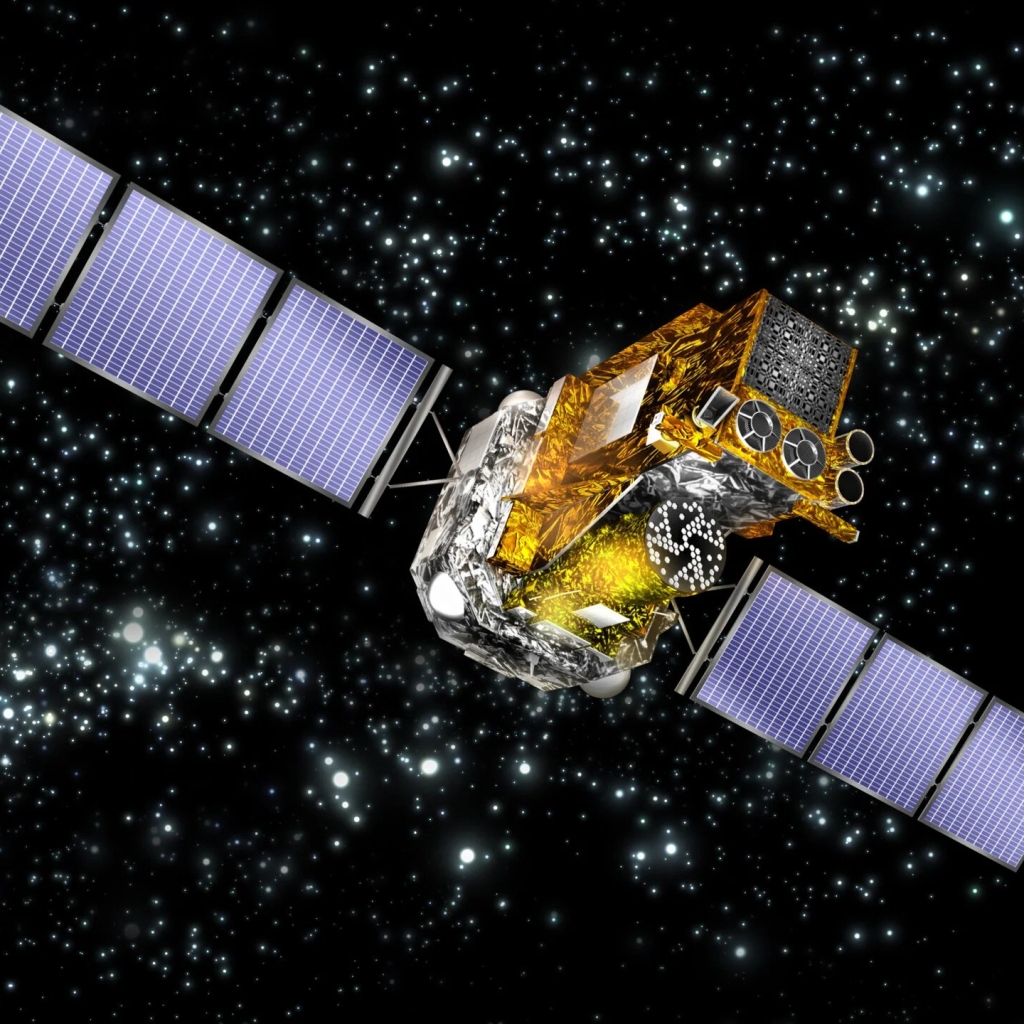In a series of four articles, we explored the secrets of the Milky Way at MeV energy through the yet powerful data of the SPI aboard the INTEGRAL satellite.
1. The MeV spectrum rediscovered
More than 20 years after the last measurement of the Milky Way’s diffuse emission spectrum in the MeV range by CGRO/COMPTEL, a new era unfolds with SPI aboard INTEGRAL. The signal-to-noise ratio now surpasses historic observations, thanks to an advanced instrumental background model and treatment of systematic uncertainties. The analysis reveals an inverse-Compton-dominated Galactic diffuse emission with a power-law spectrum, with an index of -1.39±0.09, which aligns with COMPTEL measurements [1].
2. MeV photons for primordial black holes dark matter
Delving further into the cosmic unknown, we employed SPI data to search for primordial black holes (PBH) as potential dark matter candidates. For the first time, the spatial distribution of their signal is integrated into the analysis, but no PBH signal is detected. This study sets the most stringent limits on PBH dark matter, extending into the asteroid mass range and refining our understanding of the elusive nature of dark matter [2].
3. Decaying dark matter particles in the MeV sky
We harnessed SPI data and dark matter spatial templates to set unprecedented bounds on dark matter candidates lighter than WIMPs. Sterile neutrinos or axion-like particles, undergoing two-body decays into electromagnetic final states, face the scrutiny of this analysis. The derived bounds represent the strongest to date for dark matter masses between ∼60 keV and ∼16 MeV, shedding light on the potential existence of these elusive particles [3].
4. Annihilating dark matter particles in the MeV sky
We finally turned the focus to annihilating light dark matter particles in the Galactic halo. Using different spatial templates and models for diffuse Inverse Compton emission, we derived the strongest bounds to date on annihilation cross sections for both electron-positron and photon-photon final states. The upper limits, along with fitting formulae, provide a roadmap for future explorations in the quest to unveil the cosmic mysteries concealed within the dark Galactic halo [4].
As the cosmic saga continues, the revelations from INTEGRAL’s SPI open new avenues for understanding the intricate dance of particles and energies within our galaxy, ushering in a new era of discovery in the realm of gamma-ray astrophysics.
Relevant links
[1] Siegert T., et al., Diffuse Galactic emission spectrum between 0.5 and 8.0 MeV, https://arxiv.org/abs/2202.04574
[2] Berteaud J., et al., Strong constraints on primordial black hole dark matter from 16 years of INTEGRAL/SPI observations, https://arxiv.org/abs/2202.07483
[3] Calore F., et al., Constraints on light decaying dark matter candidates from 16 years of INTEGRAL/SPI observations, https://arxiv.org/abs/2209.06299
[4] Siegert T., Calore F., and Serpico P. D., Sub-GeV Dark Matter Annihilation: Limits from Milky Way observations with INTEGRAL, https://arxiv.org/abs/2401.03795
